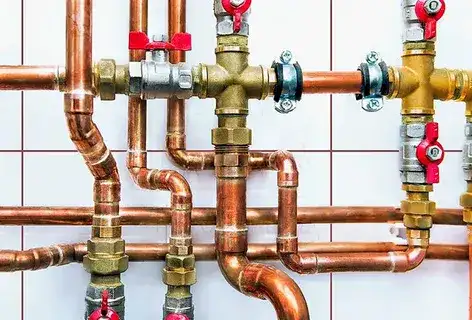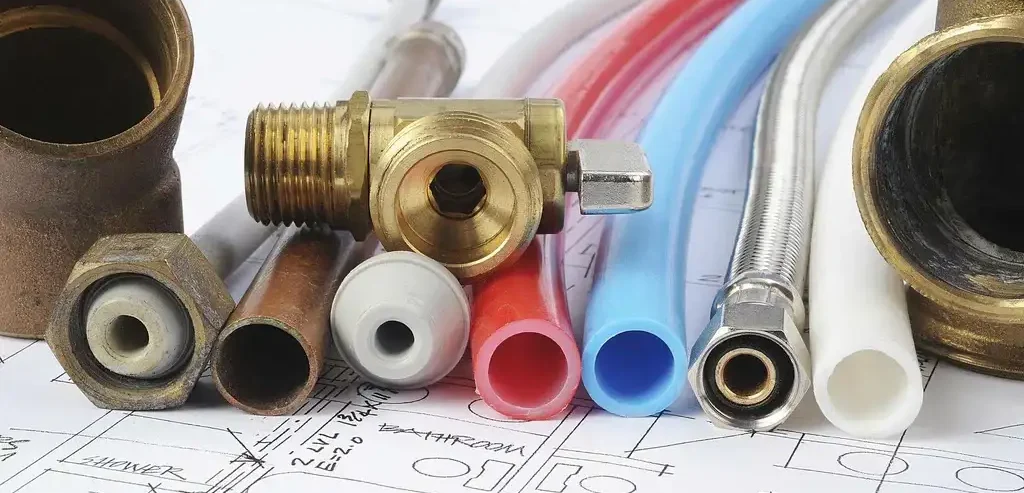Repiping your house is necessary to keep your plumbing in good shape. The cost to repipe a house varies with different factors. These factors include the size of the house, the type of pipes used, and the amount of work needed.
We’ll go over the average cost to repipe a house. First, we’ll identify the signs that show your home might need repiping or plumbing work. Then, we’ll give you different types of repiping options available to choose the best for you. We’ll also break down the costs so you know what to expect. So, read this guide to save your time and money.
Average Cost to Repipe a House

On average, homeowners spend between $4 to $10 per sq ft to repipe a house. In the US, a standard-size house for a single family consists of 2,000 to 2,480 square feet. The average cost to repipe an entire house can range between $8,000 and $20,000.
Remember that this is just a rough estimate. This cost can change according to the material and work needed. Also, the costs vary with region. It is always best to get quotes from experts to get an accurate budget.
Signs That Your Home Needs Repiping
Low Water Pressure: if you notice low water flow from the taps, it may be because the pipes are clogged or damaged.
Discolored Water: if you notice yellow or rusty water flowing from taps, you should check your pipelines.
Frequent Leaks: if you’re constantly dealing with leeks in different pipes, it means new pipes are needed.
Noisy Pipes: Banging or rattling sounds in your pipes can be a sign of issues like loose or damaged piping.
Old Pipes: If your home is over 50 years old and still has the original pipes, it’s probably time to consider re piping.
Types Of pipe
When it comes to repiping, several pipe types are commonly used, each with its advantages. Copper, PEX, and CPVC are the most commonly used materials for repiping.

CPVC
CPVC, or chlorinated polyvinyl chloride, is a sort of plastic pipe used for repiping. CPVC is produced by adding chlorine to PVC in a water slurry or fluidized bed chlorination. This chemical process makes the pipes able to withstand up to 100 psi at 180ºF.
It is heat resistant and won’t rust or corrode. One of the major benefits of CPVC is that it’s affordable and easy to install. It also doesn’t require any special equipment. However, CPVC can be brittle in very cold weather and might crack over time. So it is better to use it for homes in hotter regions.
PEX
PEX, or cross-linked polyethylene, is another plastic piping option that has grown to be very popular for repiping. PEX is flexible, which makes it easy to put in tight areas. It’s resistant to freezing, so it’s an excellent choice for houses in colder areas. While PEX is extremely popular, some appliances, such as water heaters, need a base copper pipe of 18 inches or greater before connecting PEX.
One of the most important advantages of PEX is its durability and low cost. It often costs less than copper. However, it can’t be used outdoors because the sun can damage it over time.
Copper
Copper pipes have been used for decades and are regarded for their strength and durability. Copper is naturally resistant to bacteria. This makes it last for over 50 years. It is also fire-resistant, which adds a level of safety to your property. Copper can cope with severe heat and cold, making it ideal for both hot and cold water lines.
Copper is more expensive than CPVC or PEX. To install copper lines, skilled plumbers are required. So, this method is both expensive and time-consuming. If you’re searching for long-lasting, high-quality piping, copper is a great choice, even if it comes with a high price.
Below is a table to show average cost to repipe a standard house:
| Piping | Average Cost |
| CPVC | $4,000 and $8,000 |
| PEX | $3,500 to $7,500 |
| COPPER | $8,000 to $15,000 |
Factors Affecting the Cost of Repiping a House
Understand what factors should be considered while repiping a house.
Size Of The House
The size of your home plays a big role in the cost of repiping. Larger houses need extra pipes, which means more material and labor. The more square feet and rooms you have, the higher the price.
Number Of Plumbing Fixtures
The number of plumbing fixtures, like sinks, showers, and bathrooms, also impacts the cost. Each fixture requires its own connection to the plumbing system. So the more number of connection will cost more.
Ease Of Pipe Accessibility
If your pipes are easy to reach, the process will cost less. However, if the pipes are in the walls, under floors, or in tight spaces, the cost will increase. Because the plumber will need more time to get into the pipes, thus the labor cost will increase.
Diameter Of The Pipe
Pipes are available in different sizes. The diameter of the pipe can impact the total cost. Larger pipes are more expensive than smaller ones. The size of the pipe depends on the water pressure and the flow rate required for your house.
Type Of Pipe Being Installed
There are different kinds of pipes available. As mentioned above, materials like CPVC, PEX, and copper have different costs. Copper is expensive, while PEX and CPVC are low-price. Your preference will depend upon your budget and needs.
Inspection Cost
After repiping, a home inspection is required to make sure everything is up to code. Inspection costs can add to the total price. But, they are important to ensure your plumbing system is safe and meets local guidelines.
New Appliances Installation
If you’re upgrading your plumbing, you could also need to install new appliances, like water warmers or dishwashers. Adding new home appliances can increase the average cost of the project. But new appliances may also enhance the efficiency of your home.
Labor Cost
Labor is one of the biggest factors in the total cost to repipe a house. The complexity of the task and the local labor fees affect the total labor cost. But you may expect to pay anywhere from $2,000 to $10,000 or more for a standard house.
Always get quotes from multiple agencies to get the best budget for your project. You can also use a cost calculator to estimate the average cost of repiping your house.
Conclusion
On average, homeowners spend between $4 to $10 per sq ft to repipe a house. In the US, a standard-size house for a single family consists of 2,000 to 2,480 square feet. The average cost to repipe an entire house can range between $8,000 and $20,000.
It is recommended to analyze different types of piping and their cost to choose the best for you. It is always best to get quotes from multiple agencies so that you can get an accurate cost for your project.

